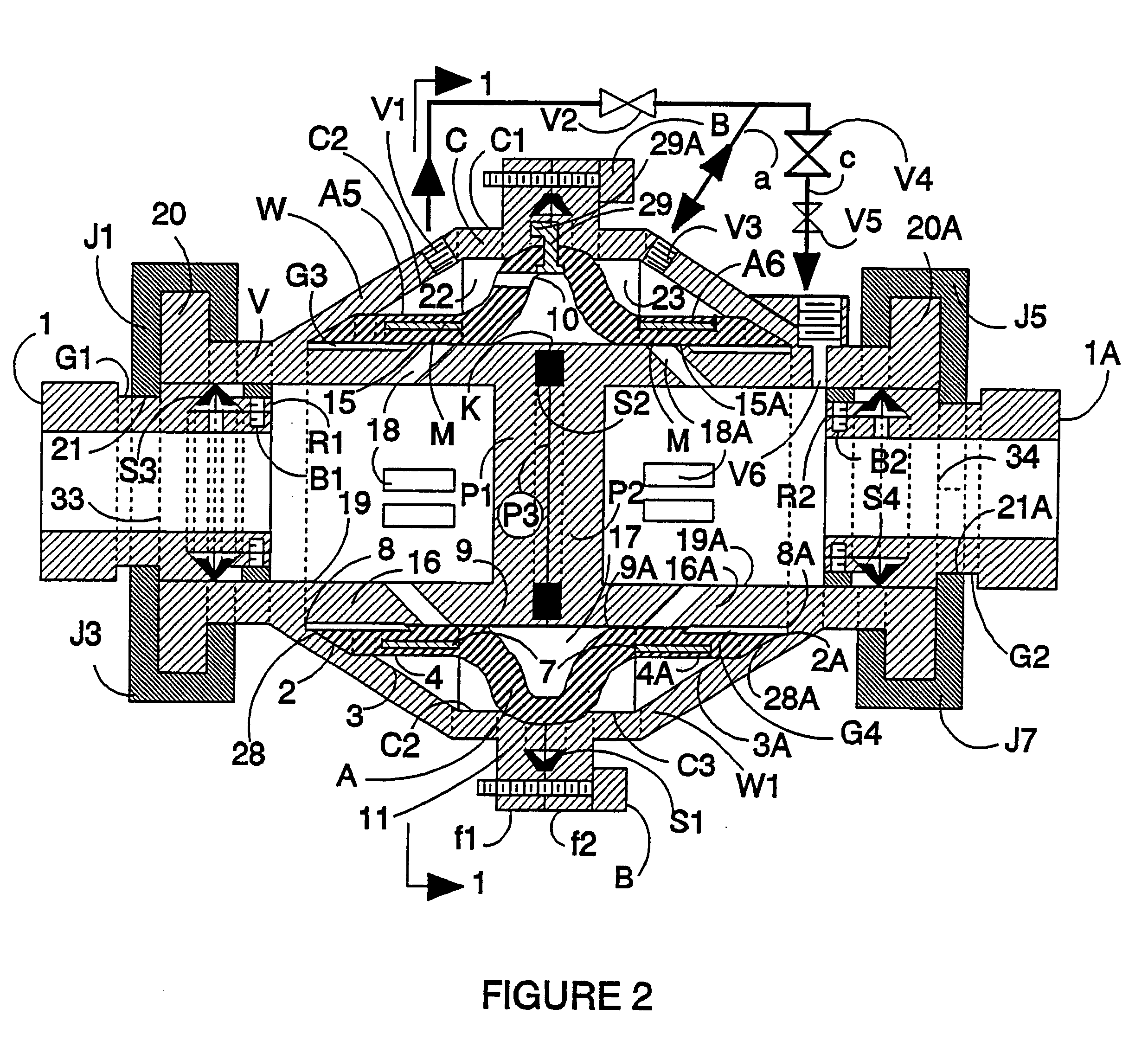Multi-diaphragm valve
a multi-diaphragm, valve technology, applied in the direction of diaphragm valves, engine diaphragms, couplings, etc., can solve the problems of high frictional losses through the valve, limited capacity of the diaphragm sleeve valve as the valve is shut, and the diaphragm sleeve valve requires less maintenan
- Summary
- Abstract
- Description
- Claims
- Application Information
AI Technical Summary
Benefits of technology
Problems solved by technology
Method used
Image
Examples
Embodiment Construction
The drawings described are not to any particular scale. The valve body is constructed symmetric and concentric to the axis of the valve. Therefore, except in FIG. 3, only axial vertical sections of the valve are shown. To understand the invention, all figures can be studied together. First, FIGS. 1, 2, and 3 will be studied together. FIGS. 1 and 2 are exactly the same, except that the elastomeric diaphragm in FIG. 2 is provided with arcuate platens M, M1, M2, and M3, which are depicted in FIG. 3. If platens are used, there will always be at least one platen, but the total number of platens used can vary from valve to valve, and they can be more than four arcuate platens as depicted by the FIGS. The valve body V includes a composite body made of two parts, where each part is depicted by its outer wall W and W1 respectively. The first part has an inlet cylindrical chamber 16 with inner diameter 19. The inlet chamber 16 has cylindrical inlet 33 for the entrance of the fluid from pipe l...
PUM
 Login to View More
Login to View More Abstract
Description
Claims
Application Information
 Login to View More
Login to View More - R&D
- Intellectual Property
- Life Sciences
- Materials
- Tech Scout
- Unparalleled Data Quality
- Higher Quality Content
- 60% Fewer Hallucinations
Browse by: Latest US Patents, China's latest patents, Technical Efficacy Thesaurus, Application Domain, Technology Topic, Popular Technical Reports.
© 2025 PatSnap. All rights reserved.Legal|Privacy policy|Modern Slavery Act Transparency Statement|Sitemap|About US| Contact US: help@patsnap.com



